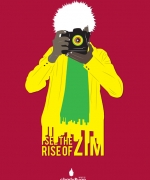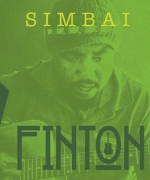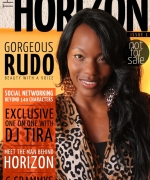Stranger in Berlin
The first thing that strikes me about Berlin, is how the people dress. I have memories of my older sister, in her preteen years, on the veranda of our house in Harare, standing proud in a burst of colour, dressed like Punky Brewster, her toothy grin daring you not to love her outfit. Perhaps I only have memories of the photographs, so often flicked through with nostalgic hands. It’s hard to tell now, which memories of Harare emigrated with me, and which were later arrivals, never experienced but quietly assimilated years later in Dublin. I remember, too well, the outfits of my first years in Dublin. They too were bursts of colour, bright and oversized shrouds of the hip hop soundtrack of my emigration.
I recall, on my first arrival to Ireland, cows grazing somewhere very close to the runway. This might be a tourism board ploy to get the favoured American visitors to immediately feel pastoral, or my imagination warping my memories because I felt pastoral. The descent to Dublin is the redemption of every flight; no matter how bad the food was or how loud someone’s baby was crying, if one has a window seat, it’s always a pleasure to watch as the dim grey plate of sea gives way to a beautiful tapestry of green textures. As the ground rises to meet you, field and park and forest, in the deepest hues and faint, is framed and sliced and signed by roads and paths and dotted by buildings, which multiply and conglomerate into a density of grey, lined and dotted by strips and patches of unrelenting, exuberant green.
Zimbabwe is very green too, the sinuous stretch of the Eastern Highlands and its tea-planted valleys springs to mind, but this only accentuates the expanse of savannah hues, of sunned vegetation, golden and red, and all colours between. The “Emerald Isle” officially surrendered its own Punts for Euros in 1999, at the peak of the Celtic Tiger, and the year I first touched Irish soil. I remember the first day in Irish secondary school, wearing the full uniform: shirt, tie, trousers, blazer, and hideous black shoes. I was the only one. Everyone else had just enough uniform on to make a case, if it went to court. The most dishevelled uniforms were worn with greatest pride, there were no blazers, most had hoodies, jackets and sneakers. It was very casual, and revealed, comfortingly, that Irish youth were just as Americanized as Zimbabwean youth. I wasn’t going to need a new wardrobe to feel at home.
The architects dressed different. When I started university in 2003, studying architecture in Dublin, the inevitability of wardrobe change was immediately evident. All the architects wore black. Clearly this had to be a case of convergent evolution, something in the process of becoming an architect would blacken all our clothes as it had theirs. And so it did. By the time I graduated I could wear black on black on black nearly all week, and the dark tones of winter had made it my favourite season. Of course, fashion trends in general were changing. The rise and rise of indie bands made jeans ever skinnier and gave t-shirts ever funnier and ironic phrases. A new age techno scene blossomed and either forgot, or, more likely, wasn’t bothered, to wear “normal” clothes outside the clubs in daylight. The hipster appeared and began the 1000 year reign. The global recession and collapse of the job market lit a fire under the art community: new enterprises, new projects, new pieces kept popping up, and often the canvas were the artist themselves. Tattoos became so mainstream they could actually help at job interviews.
I had a phone interview at the end of 2013, so tattoos, which I didn’t have, would not have helped anyhow. That phone call brought me to Berlin on the 2nd of January, 2014. I remember how excited I felt in the taxi ride from Berlin Tegel airport to the apartment I would be renting for the first 2 weeks. The apartment was on Turiner Straße, (Turin Street). I had been to Turin, the industrial northern Italian city, once. I stayed with an Italian family for a week. They lived on Piazza Barcellona and had homemade ice-cream and pasta, and the children read Dante’s Divina Commedia in its entirety. I’ve been to Barcelona, Spain’s Catalan capital, twice. The first visit was with my architecture class, to admire the works of Gaudi and the many great modern buildings there. It was March, the time of the 6 Nations Rugby final, so naturally we went, blissfully unaware of the pain the Welsh would mete out, to support the Irish team in an Irish pub. The pub was next to Gaudi’s incomplete masterwork, La Sagrada Familia, but the basilica had no TV or beer.
I suspect every city has an Irish pub, and I think it’s true of all forty European cities I’ve been to. I travelled, always with a sketchbook or camera, eager to observe these strange lands. Except they weren’t strange. The cities had different histories and cultures, the people had different languages and complexions, foods and dances, but just as the years of architecture school drew me and my colleagues into a vortex of black textiles, just as I had found the Irish not so dissimilar to the Zimbabwean, decades of global culture, open borders and cheap travel within Europe, had given these very different cities a
certain similarity.
The sameness is here in Berlin also. American Apparel, Burger King, Jurassic World. But there is also the “other”. Not the “other” that becomes so after being ostracised by the in-crowd, but the self-selected, self-announced “other”. When I arrived at the apartment and put my bags down, ready to explore, the first thing that struck me about Berlin, is how people dress. On my first trip on the U-Bahn, the subway that reduces the city’s 890 square kilometres to a few Euro and an hour, the familiarity that I felt in every other city I travelled to, dissipates for the first time. It’s in the clothes; in outfits so outlandish, so bizarre, the ubiquitous sameness cedes the stage. It’s clear you can wear anything (or nothing) in Berlin, and hardly anyone will be bothered or even notice.
There is a special sense of freedom. What is strange here is no stranger than in other places, but it is more; more numerous, more intense, more expressive. I think this idiosyncratic openness oozed out of the wound between East and West, in the 40 years that Berlin was two cities until 1990. It meant that the reunified city would have two equally vivid memories of the vacuum left by the fall of the Prussian empire, of Nazism, of the humiliation of defeat and occupation and years of separation. The city is necessarily dialectical, the distance between its two narratives leaving room for the unorthodox, the potential.
What is suffocated everywhere else thrives here, and all Berlin benefits. The fancy retail in Kurfürstendamm depends on the seduction of endless parties in Neukolln’s battered basements. All manner of ideologies and lifestyles are able to find a home in the many unprogrammed spaces like the immense Tempelhofer Feld, but are also welcome to intrude as protests, rallies or celebrations through the heart of the city, like the LGBT parade marching up to Brandenburg Gate and the Memorial to the murdered Jews. It is for this Berlin attracts so much interest and investment and is today ranked the world’s 3rd most livable city. Anyone, of any lifestyle, can fall in love with Berlin.
I have met, quite randomly, some Zimbabweans in Berlin. As I was finishing this article, having that first Friday drink in the office with a colleague, I discovered he too was born in Harare, and emigrated as an 11 year old to Berlin in 1998.
He will be going back for Christmas, after 17 years away. I hope he brings the love of the dialectic, the willingness to hear a different narrative and interrogate one’s own position to Zimbabwe. I hope for that third “space”, that welcomes what is “other”, what is seen as obscene, what might be taboo. That space where we find, in chorus, observation or opposition, what is good, what is beautiful, what is true.




